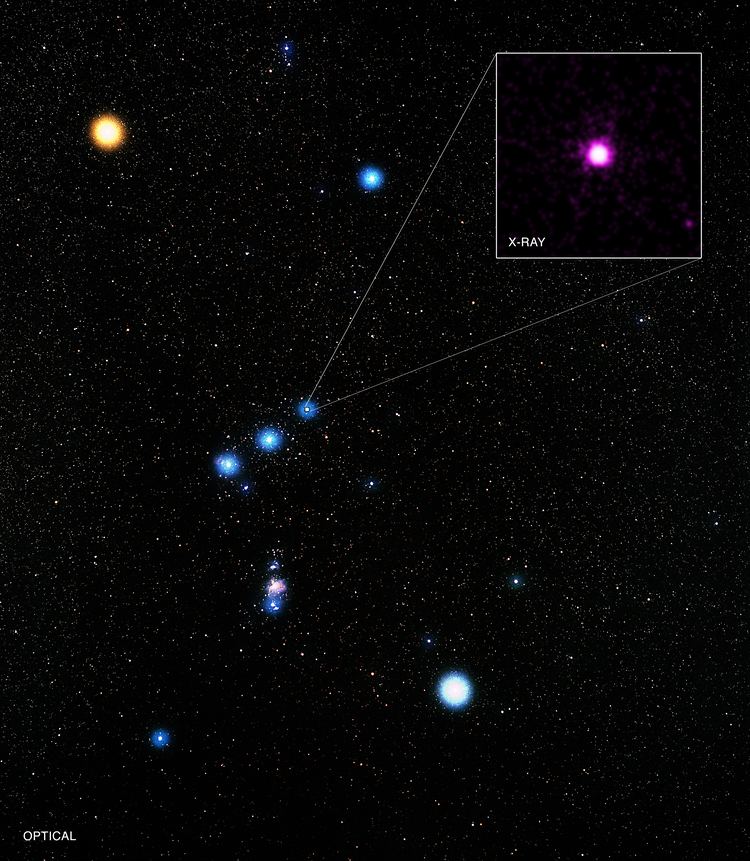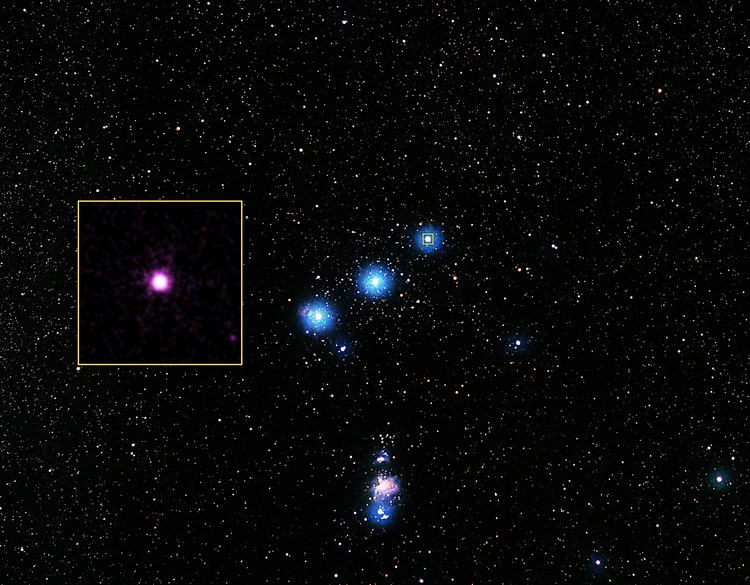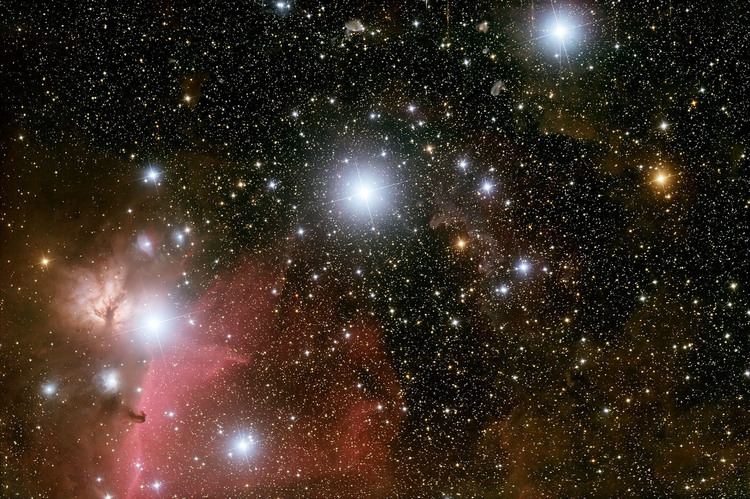 | ||
Orion's Belt or the Belt of Orion, also known as the Three Kings or Three Sisters, is an asterism in the constellation Orion. It consists of the three bright stars Alnitak, Alnilam and Mintaka.
Contents

Looking for Orion's Belt in the night sky is the easiest way to locate Orion in the sky. The stars are more or less evenly spaced in a straight line, and so can be visualized as the belt of the hunter's clothing. They are best visible in the early night sky during the Northern Winter/Southern Summer, in particular the month of January at around 9.00 pm.

Sabrina claudio orion s belt official video
Alnitak

Alnitak is pronounced ALL-nit-ahk. Alnitak (Zeta Orionis, 50 Ori) is a triple star system at the eastern end of Orion's belt, and is 817 light-years from the Earth. It has 100,000 times the luminosity of the Sun. Considering ultraviolet light, its luminosity comes out at 250,000 times that of the Sun. The primary (Alnitak A) is itself a close binary, comprising Alnitak Aa (a blue supergiant of spectral and luminosity type O9.7 Ibe, with an absolute magnitude of -5.25 and an apparent magnitude of 2.0) and Alnitak Ab (a blue dwarf of spectral and luminosity type O9V, with an absolute magnitude of about -3.0 and an apparent magnitude of about 4, discovered in 1998). Aa is estimated as being up to 28 times as massive as the Sun, and to have a diameter 20 times greater. It is the brightest star of class O in the night sky. Alnitak B is a 4th-magnitude B-type star which orbits Alnitak A every 1,500 years. A fourth star, 9th-magnitude Alnitak C, has not been confirmed to be part of the Aa-Ab-B group, and may simply lie along the line of sight.
The Alnitak system is bathed in the nebulosity of IC 434.
Alnilam

Alnilam (Epsilon Orionis, 46 Ori) is approximately 1,340 light-years away from Earth and shines with magnitude 1.70. Considering ultraviolet light Alnilam is 375,000 times more luminous than the Sun. It is a large blue supergiant star in the constellation of Orion. Its Flamsteed designation is 46 Orionis.
It is the 29th-brightest star in the sky and the fourth-brightest in Orion.

Since 1943, the spectrum of this star has served as one of the stable anchor points by which other stars are classified. It is also one of the 57 stars used in celestial navigation. It is at its highest point in the sky around midnight on December 15.
Alnilam's relatively simple spectrum has made it useful for studying the interstellar medium. Within the next million years, this star may turn into a red supergiant and explode as a supernova. It is surrounded by a molecular cloud, NGC 1990, which it brightens to make a reflection nebula. Its stellar winds may reach up to 2000 km/s, causing it to lose mass about 20 million times more rapidly than the Sun.
Mintaka
Mintaka (Delta Orionis, 34 Ori) is 915 light-years away and shines with magnitude 2.21. Mintaka is 90,000 times more luminous than the Sun. Mintaka is a double star. The two stars orbit around each other every 5.73 days.
